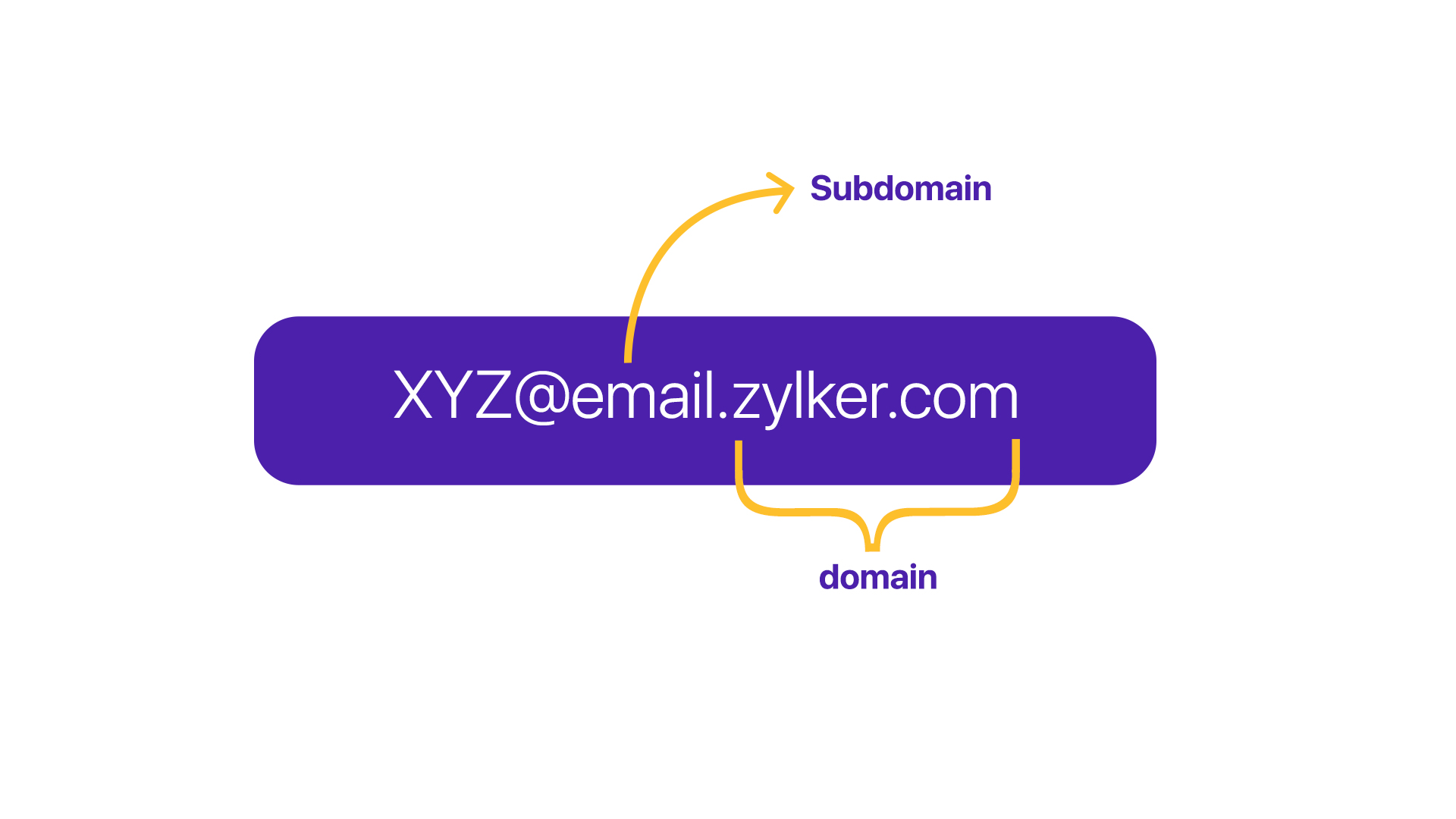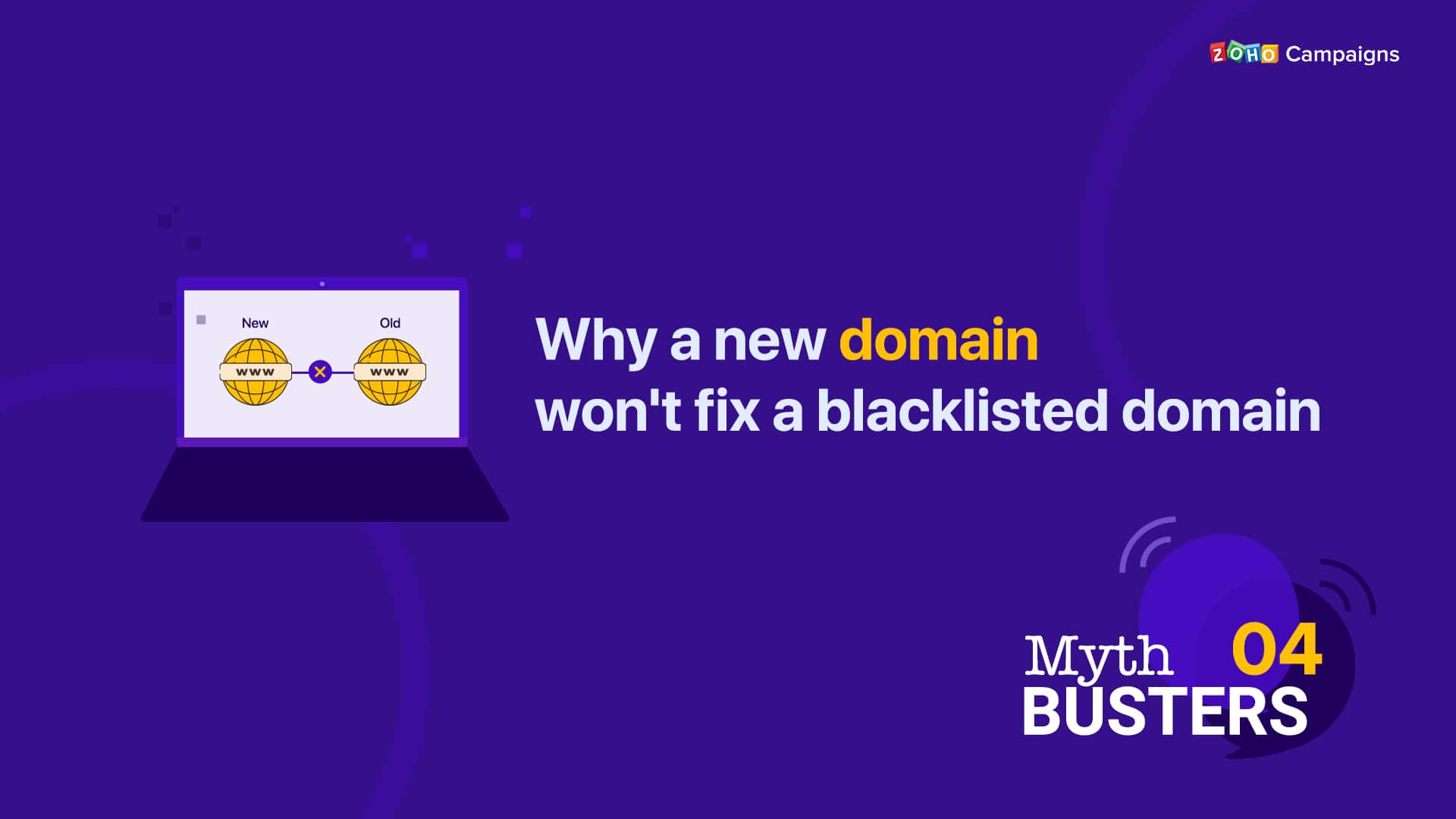The user manual of every email marketing software solution says, “We don’t recommend sending emails from multiple domains.”
Though a simple statement, given the subject’s abstractness, we wanted to give you a detailed explainer why this is true.
Let’s face it, nobody likes their email-sending domain getting blacklisted. It brings marketing activities to a screeching halt and affects other business operations that use the same domain. If you’ve heard someone saying, “Just replace your blacklisted domain with a new one,” you’re not alone. It’s a misconception that many have, and we’re going to debunk it here.
First things first: What are email blacklists?
Email blacklists are online registries of blocked domains and IP addresses that were used to send spam. Created and maintained by anti-spam services, ISPs (Internet Service Providers), and ESPs (Email Service Providers), blacklists prevent spam from reaching mailboxes.
How does a domain get blacklisted?
Each organization we just mentioned uses certain techniques to identify and blacklist a malicious (or dubious) domain. Let’s discuss them one by one.
Email Service Providers
Gmail, Yahoo, Zoho Mail, and more gauge an email based on its sender’s domain reputation. Put simply, if the reputation is good, it means the email-sending practices are healthy; if it’s bad, the contrary.
This good-bad demarcation is done using a scoring system. On the one hand, recipient responses like opens, clicks, and multiple link clicks improve your domain reputation score. On the other hand, recipient responses like unsubscribes, spam and abuse complaints, and more decrease your score. Thus, if the score goes below the cut-off limit, the domain gets blacklisted. You can read more on domain reputation here.
Side note: ESPs also maintain spam traps using fake and inactive email addresses to get hold of spammers. If you hit a spam trap (mostly because of purchasing mailing lists), the domain’s reputation greatly declines. Here’s a detailed guide on what spam traps are and how you can avoid them.
Internet Service Providers
ISPs likely use spam filters to scan every bit of an email: subject line, preheader, body content, images, URLs, and more. They also likely scrutinize text for the presence of keywords or phrases that can trigger spam filters. Above all, images are checked against a registry of previously reported images.
When it comes to including URLs, they shouldn’t be connected with a blacklisted domain. Ultimately, all these data points are used to score an email, thus forming their own reputation system.
Anti-spam services
Spamhaus, Barracuda, SpamCop, and other services deliberately create and circulate fake email addresses to create spam traps. This is because spammers collect publicly available email addresses and use or sell them on the black market.
Since only spammers and dishonest email marketers will have access to these non-opt-in, fake email IDs, the benefit of the doubt goes to the anti-spam services once a spam trap is hit.
Along with spam traps, these services also use the marked-as-spam history and abuse complaints of a sender’s domain for their assessment. (The previously-discussed technique of the ISPs is used as well.)
So why shouldn’t I use a new domain?
The domino effect
Let’s think through this: If a domain gets blacklisted due to the bad hygiene of mailing lists, spam content, or other reasons, why would a new domain ensure smooth sailing if the initial problem is related to email practices?
If the root cause of the problem is not rectified, chances are that the same mistakes will occur again. This, in turn, puts the new domain at risk, leaving you at square one.
Unnecessary confusion
From an audience’s perspective, they might feel that the new emails are from an unknown source. Imagine receiving emails from [email protected] for two months after subscribing only to then start receiving emails from [email protected]. This can lead to increased unsubscribe rates and spam complaints, affecting the domain reputation.
Domain warmup and reputation
Adding a new domain doesn’t mean you can continue from where you left off. For example, if you sent 20,000 emails from a blacklisted domain as part of a recent campaign, you can’t just send such high-volume emails from day one from your new domain.
You need to adhere to the concept of domain warmup: building a positive reputation from scratch while slowly amping up the volume of emails. This is because the mailbox providers—in order to safeguard their users from spammers—reject high-volume emails from a sender domain that has zero reputation.
How do I fix a blacklisted domain?
Delist your domain
As soon as blacklisting happens, you can use lookup tools like MXToolbox, MultiBRL, and more to learn the reason(s). Next, contact the service(s) that has blacklisted your domain and submit a delist request.
By now, you’ll have a clear idea about what went wrong, so go back to the drawing board and analyze your email-sending practices while your delist request is being processed. (Sending further emails before getting unblacklisted can aggravate the situation.)
Quick tip: As domain reputation is directly linked to engagement rates, here’s a how-to on improving trustworthiness among your audience.
Use subdomains
When you use your primary domain for multiple purposes, the margin for error is very small. A non-email-marketing problem affecting your domain’s reputation has an effect over your email marketing and vice versa. This is where subdomains can come in handy.
Subdomains are mighty helpful in reputation management, as they can function as a separate domain while still being linked to the primary or parent domain. This way, you can easily narrow down email-deliverability-based issues (if any) and protect your reputation. 
We hope this helped! Stay tuned to this space as we debunk another myth soon.
Net Universe offers all Zoho subscritpions and consultant services with worldwide Delivery Services.
Send us an email to [email protected] for more information or visit https://www.netuniversecorp.com/zoho.






